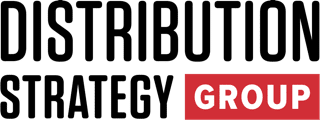As tariffs once again loom large in global trade discussions, MRC Global Inc. is positioning itself not merely to withstand the shifting landscape — but to actively use it as a strategic advantage. With renewed enforcement of U.S. trade policies and ongoing volatility in steel and aluminum markets, the Houston-based distributor is leaning into inflationary conditions to boost pricing, maintain healthy margins, and drive targeted expansion across core and emerging markets.
Don’t miss any content from Distribution Strategy Group. Join our list.
During its recent Q4 2024 earnings call, MRC Global CEO Rob Saltiel articulated a clear view: tariffs, particularly those under Section 232, are working in the company’s favor. These tariffs impose a 25% duty on steel and 10% on aluminum imports from most countries, driving up the cost of essential inputs across the industrial economy. But for MRC Global—a top distributor of pipe, valves, and fittings (PVF) to infrastructure-heavy sectors such as oil and gas, utilities, and energy transition projects—this inflation is proving beneficial.
“The application of tariffs on imported products not only increases the cost of those products, but it provides an impetus for competing U.S. manufacturers to increase their pricing due to the protection afforded by the tariffs,” Saltiel said. “We expect the current price levels to stick.”
Rather than viewing tariff-induced price hikes as a margin squeeze, MRC is using them as a pricing lever. The company’s cost-plus pricing model allows it to pass these increases through to customers, many of whom operate under long-term contracts that contain pricing mechanisms aligned to market fluctuations.
“Inflation is generally a positive for our business,” Saltiel explained. “We have pass-through mechanisms with our contract customers, and the majority of our product sales are based on cost-plus formulas that align pricing with market conditions.”
This strategy is especially potent given MRC’s exposure to industries where steel and aluminum-based products are not optional, but mission-critical. Whether it’s line pipe for gas transmission, flanges for refineries, or valves used in hydrogen production infrastructure, the company’s catalog is directly shaped by U.S. tariff policy—and in this case, so are its margins.
MRC Global’s customers span a wide array of heavy industry sectors, all of which depend on metal-intensive infrastructure. These sectors include:
- Gas utilities: A core growth area for MRC, with demand centered on steel pipe, compression components, and metering systems used in gas transmission and distribution.
- Midstream pipelines: Large-diameter steel pipe and control valves required for oil and natural gas transportation infrastructure.
- Downstream processing: Chemical plants and refineries that use corrosion-resistant alloy valves, high-pressure flanges, and flow control equipment, often imported.
- Energy transition projects: Hydrogen, carbon capture, and sustainable fuels initiatives that increasingly rely on specialty metals and precision-engineered PVF products not readily sourced domestically.
Section 232 tariffs apply not just to raw materials but to many finished components that MRC distributes. Saltiel noted the ripple effect these tariffs create throughout the supply chain.
“Due to the Section 232 tariffs on non-valve steel and aluminum imports from every country, we have seen domestic steel prices rise significantly, which has had a direct impact on the prices of line pipe and carbon steel fittings and flanges,” he said.
MRC’s product mix—centered on steel pipe, carbon and alloy valves, flanges, and fittings—makes it especially responsive to changes in trade policy. And unlike manufacturers, which may struggle to retool supply chains, MRC’s role as a distributor gives it greater flexibility to adjust pricing quickly and manage inventory dynamically across projects.
While many industrial firms are cautious about inflation and its effects on capital spending, MRC Global is embracing inflationary pricing as a structural advantage. Saltiel identified inflation-driven price realization as one of four key growth levers for 2025, alongside:
- A rebound in gas utility capital expenditure
- Increased investment in midstream pipeline infrastructure
- Targeted vertical expansion into sectors such as chemicals, data centers, and mining.
The gas utility sector is a priority for MRC in 2025. The company has launched a new joint venture, IMTEC, aimed at supplying smart meter assemblies to utility customers. IMTEC will support the modernization of natural gas meters by integrating automatic meter reading (AMR) technology—a move expected to drive tens of millions of dollars in revenue and expand MRC’s footprint into a historically underpenetrated customer segment, the company says.
Macroeconomic headwinds impacted MRC as full-year sales in 2024 fell 7.8% to $3.01 billion, down from $3.26 billion in 2023. Net income from continuing operations declined to $78 million from $115 million the prior year.
Fourth-quarter sales totaled $664 million, a 10% year-over-year decline, while the quarter ended with a $1 million operating loss from continuing operations. Still, the company’s adjusted gross margin for the fourth quarter remained strong at 22.0%, only slightly below 2023’s 22.2%, and full-year margins stood at 21.9%—marking the third consecutive year above the 21% threshold.
The company’s operating cash flow from continuing operations reached $268 million in 2024, its highest total since 2015. This was driven by working capital discipline, particularly in inventory and receivables management, which provided financial flexibility to invest in new opportunities and maintain dividends, the company says.
“We’re seeing improving fundamentals, higher intake, and more pricing power,” Saltiel said. “2025 is shaping up to be a strong recovery year.”
Looking ahead, CFO Kelly Youngblood suggested that MRC’s 2025 gross margin guidance of 21% may prove conservative, particularly if inflation and tariff impacts persist or expand.
“If we really start to see a material improvement related to inflation and tariffs, which suggest upside to the guidance we have on the margin,” Youngblood said. “The tariff situation is a bit of an unknown right now, but there’s definitely potential upside involved.”
That upside could be significant. MRC’s customers tend to be large, stable enterprises—utilities, EPC firms, and energy majors—with long planning horizons and limited sensitivity to short-term price changes. These customers prioritize service reliability, geographic coverage, digital integration, and product traceability—areas where MRC has heavily invested in recent years.
“Our major customers are located in faster-growing economic areas and have more stringent requirements for quality products, high service levels, systems integration, and geographic coverage,” Saltiel added.
Even as it capitalizes on current tariff dynamics, MRC Global remains vigilant.
“It’s a bit uncertain how many of these tariffs are going to be applied and how long they’re going to endure,” Saltiel acknowledged. “But our business is structured to adjust quickly through our contractual pricing flexibility and customer alignment.”
That adaptability will be tested if tariff coverage is broadened, or if key exemptions are removed. MRC’s global sourcing strategy is diversified, but significant disruptions in material flow or supplier access could require rapid realignment.
Still, in the current environment, the company believes it holds a competitive edge. Its blend of pricing agility, sector diversity, digital investment, and contract structure allows MRC to navigate inflation and policy volatility better than many peers.
In an industrial landscape increasingly shaped by supply chain resilience, decarbonization, and reshoring, MRC Global offers a case study in strategic adaptation. Where others see volatility, MRC sees opportunity, the company says.


